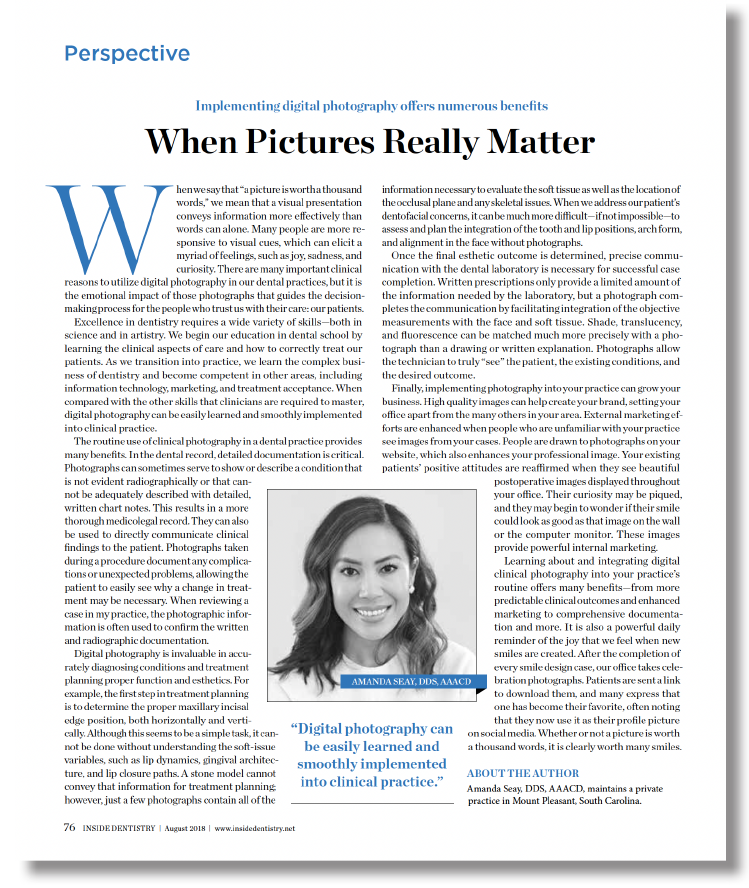Resources | Articles And Downloads
Back
When Pictures Really Matter
When we say that “a picture is worth a thousand words,” we mean that a visual presentation conveys information more effectively than words can alone. Many people are more responsive to visual cues, which can elicit a myriad of feelings, such as joy, sadness, and curiosity. There are many important clinical reasons to utilize digital photography in our dental practices, but it is the emotional impact of those photographs that guides the decision-making process for the people who trust us with their care: our patients.
Excellence in dentistry requires a wide variety of skills—both in science and in artistry. We begin our education in dental school by learning the clinical aspects of care and how to correctly treat our patients. As we transition into practice, we learn the complex business of dentistry and become competent in other areas, including information technology, marketing, and treatment acceptance. When compared with the other skills that clinicians are required to master, digital photography can be easily learned and smoothly implemented into clinical practice.
 Download
Download
Reference: Seay A. When Pictures Really Matter. Inside Dentistry. 2018;14(8): 76.
Other Articles And Downloads

It Should Never Be All or Nothing
Composite artistry provides patients with a cost-effective alternative to porcelain.
READ
Can Indirect Restorations Be Produced With the Same Level of Quality Without Using Digital Technology?
Whether or not digital tools are used in treatment, the critical foundations of quality clinical practice remain the same. Dentists must have the experience and wisdom to determine the correct diagnosis and appropriate clinical endpoint.
READ
Adopting Stronger Flowable Composites
For many clinicians, a strong, flowable composite was not available when they first started practicing. “When we were initially using flowable composites, I was trying to use as little as possible on my restorations.”
READ